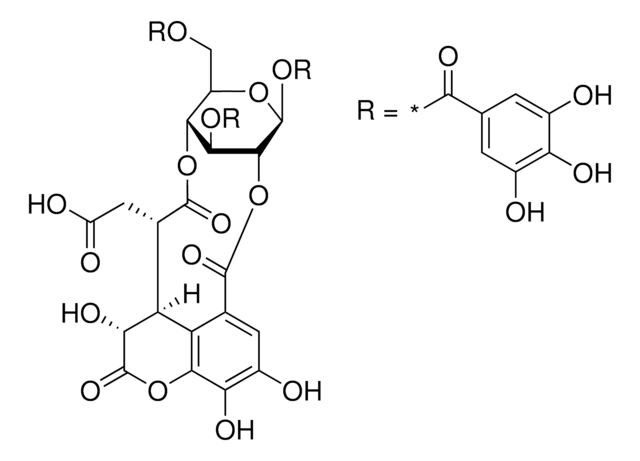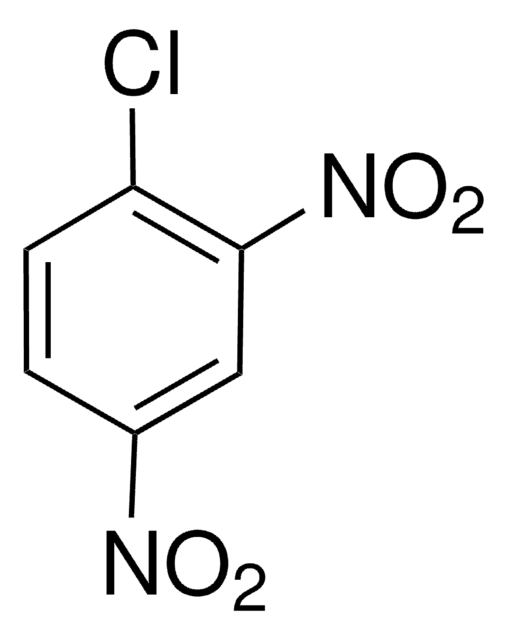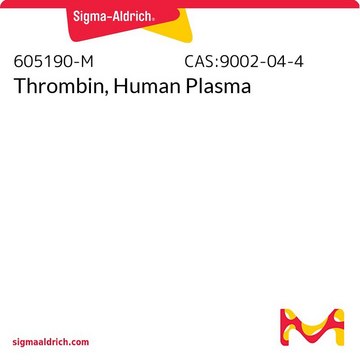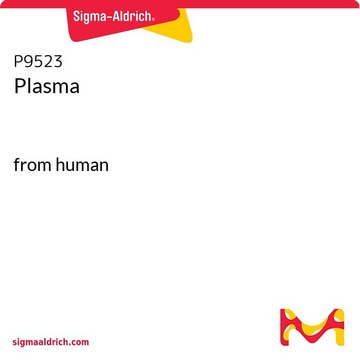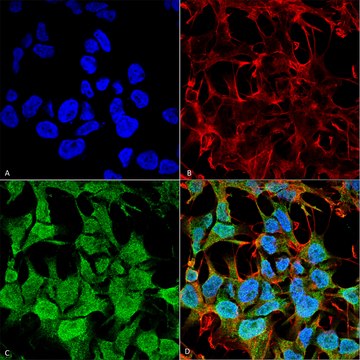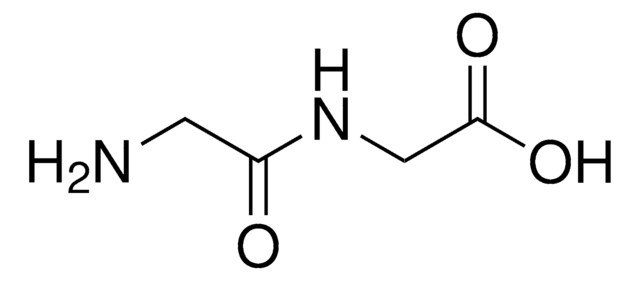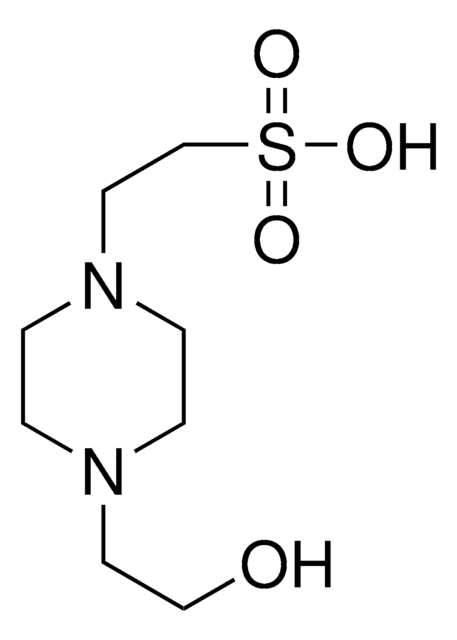推荐产品
生物来源
human
质量水平
重组
expressed in E. coli
方案
>95% (SDS-PAGE)
表单
frozen liquid
比活
21.04 units/mg protein
分子量
23 kDa
浓度
2.0 mg/mL
储存温度
−70°C
基因信息
human ... GSTA1(2938)
一般描述
using spectrophotometric determination of 1-chloro-2,4-dinitrobenzene (CDNB) conjugation with reduced glutathione (1 mM) in 100 mM NaPO4 (pH 6.5) at room temperature.
生化/生理作用
Glutathione S-transferase alpha 1 (GSTA1) is an enzyme that in humans is encoded by the GSTA1 gene. Glutathione S-transferases (GSTs) are a family of enzymes that play an important role in detoxification by catalyzing the conjugation of many hydrophobic and electrophilic compounds with reduced glutathione. Based on their biochemical, immunologic, and structural properties, cytosolic and membrane-bound forms of glutathione S-transferase are encoded by two distinct supergene families. At present, eight distinct classes of the soluble cytoplasmic mammalian glutathione S-transferases have been identified: alpha, kappa, mu, omega, pi, sigma, theta and zeta. The GSTs are thought to function in xenobiotic metabolism and play a role in susceptibility to cancer, and other diseases.
The GSTA1 gene encodes a member of a family of enzymes that function to add glutathione to target electrophilic compounds, including carcinogens, therapeutic drugs, environmental toxins, and products of oxidative stress. This action is an important step in detoxification of these compounds. This subfamily of enzymes has a particular role in protecting cells from reactive oxygen species and the products of peroxidation. Polymorphisms in this gene influence the ability of individuals to metabolize different drugs. This gene is located in a cluster of similar genes and pseudogenes on chromosome 6. Alternative splicing results in multiple transcript variants.
储存及稳定性
The enzyme should be used by the end-user customer within 1 year of receipt.
储存分类代码
10 - Combustible liquids
WGK
WGK 1
闪点(°F)
Not applicable
闪点(°C)
Not applicable
法规信息
新产品
Chen Zong et al.
Journal of assisted reproduction and genetics, 31(3), 379-382 (2014-01-07)
Recurrent spontaneous abortion (RSA) is a multifactor and distressing disease. There are still approximately half of the RSA patients with cause not being identified to date. Accumulating studies have confirmed that genetic polymorphisms in glutathione S-transferases (GSTs) were associated with
Hong-Na Wang et al.
Clinical immunology (Orlando, Fla.), 160(2), 342-348 (2015-07-30)
Pulsed low-dose cyclophosphamide (CTX) therapy has become a very effective approach in improving the clinical outcomes of lupus nephritis (LN) patients. However, variations of CTX therapeutic outcomes in LN patients are incompletely understood. We investigated the contributions of known allelic
Xue-Diao Pan et al.
Asian Pacific journal of cancer prevention : APJCP, 15(20), 8631-8635 (2014-11-07)
Glutathione S-transferase A1 (GSTA1) appears to be primarily involved in detoxification processes, but possible roles in lung cancer remain unclear. The objective of this study was to investigate the expression and function of GSTA1 in lung cancer cells. Real-time PCR
Qiwen Deng et al.
Journal of B.U.ON. : official journal of the Balkan Union of Oncology, 20(1), 287-295 (2015-03-18)
Glutathione S-transferases (GSTs) are involved in the detoxification of carcinogens, and may be linked to carcinogenesis. As a vital component of GSTs, GSTA1 plays an important role in carcinogenesis. However, the studies about the effect of GSTA1 polymorphisms on cancer
Gianfranco Spalletta et al.
Psychiatry research, 203(2-3), 180-183 (2012-09-11)
Oxidative damage in brain cells is one of the factors hypothesized to be involved in the pathogenesis of schizophrenia. Glutathione S-transferase (GST) A1*B polymorphism, a genotype associated with a higher risk of oxidative damage, is associated with increased frequency of
我们的科学家团队拥有各种研究领域经验,包括生命科学、材料科学、化学合成、色谱、分析及许多其他领域.
联系技术服务部门
